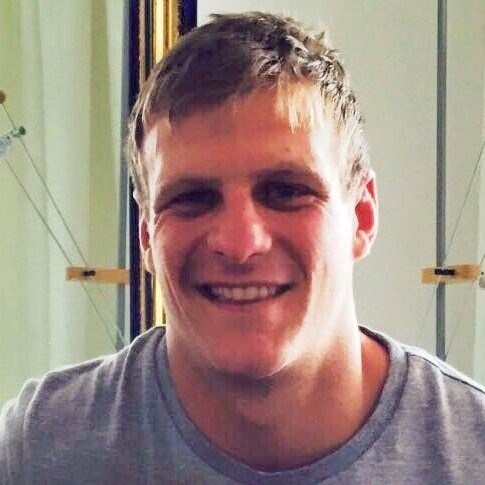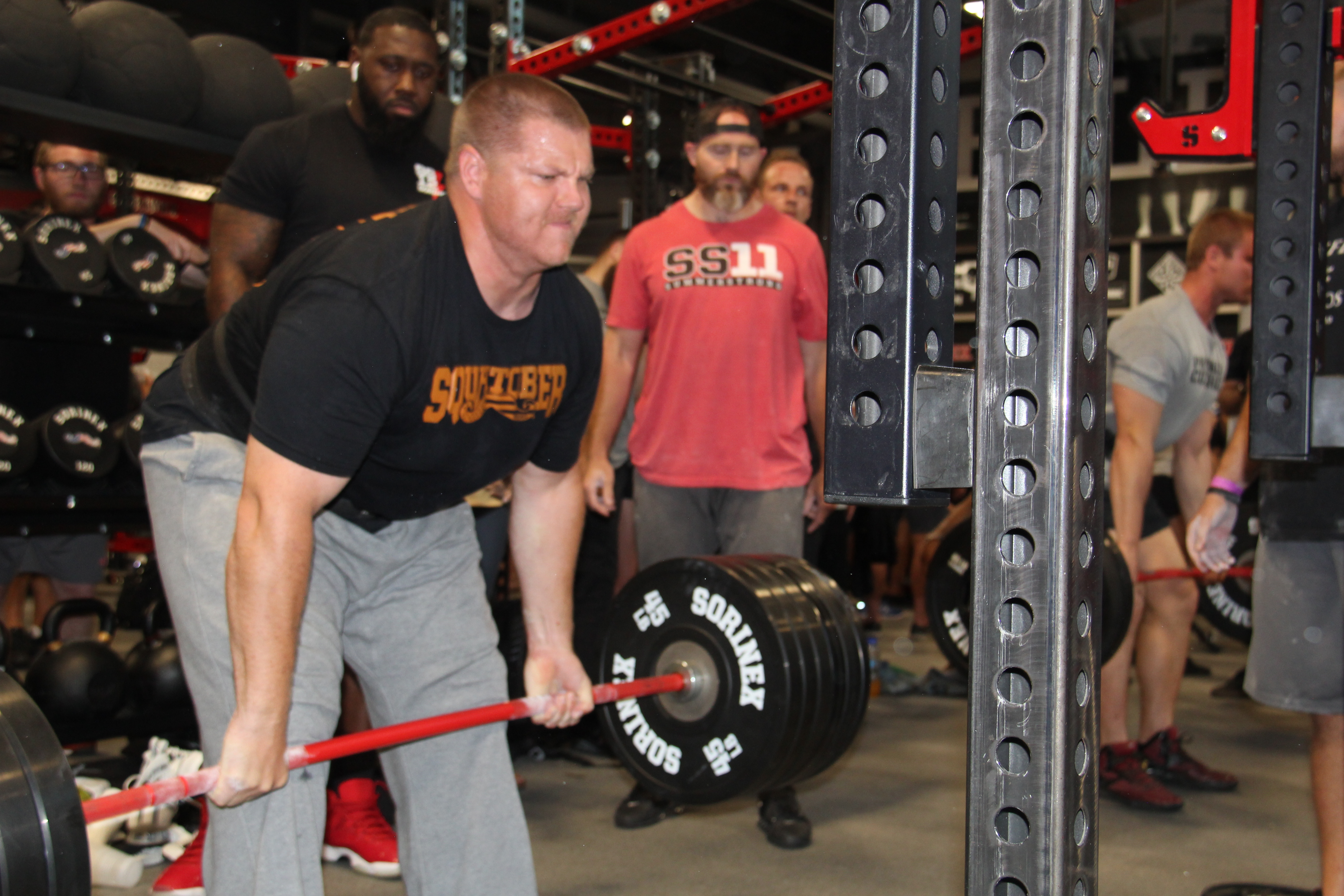How Velocity Based Training Can Transform Your Coaching Style
Coach Development | Sports PerformanceABOUT THE AUTHOR

Cedric Unholz
A former high-level rugby player, Cedric completed his Bachelors Degree in Sports Science at the University of Edinburgh, and his Masters in Strength & Conditioning with Edith Cowan University. He began his Strength & Conditioning career with the Scottish Rugby Union, first in the National Age Grade Program, then with Scottish Rugby’s senior men’s national team. The desire to continuously progress his knowledge led him to work as an assistant S&C coach for world-renowned speed development coach Derek Hansen at Simon Fraser University (Vancouver, Canada), after which he was hired as the lead S&C coach for Munster Rugby’s Academy (Limerick/Cork, Ireland). Following his work with Munster, Cedric was then engaged as an S&C coach for the Buffalo Sabres (NHL) and Rochester Americans (AHL). Cedric is currently working as an S&C coach with Olympic Windsurfers and watermen/women (Cabarete, Dominican Republic), and Sports Science Manager with PUSH (Toronto, Canada)
// How Velocity Based Training Can Transform Your Coaching Style – Part 1
In his recent book Running to the Edge, New York Times Deputy Sports Editor, Matthew Futterman recounts a tail from coach Bob Larsen. Larsen could assess, marathon champion, Meb Keflezighi’s technique by listening how long his feet were in contact with the trail. Velocity based training at its finest. That is an example of a masterful coaching style in action. Yet, not every coach has accumulated the decades of experience that developed Larsen’s sophisticated coach’s eye (and, in this case, ear). Even those who can spot and correct form errors can struggle to identify reductions in speed and power output that accompany the onset of fatigue.
This is where velocity based training (VBT) comes into play. If you’ve been around weight rooms for a while, you might recall seeing wired VBT systems attached to barbells. Perhaps you even used them back in the day. Now, there’s a new generation of portable, wireless technology that offers greater accuracy and versatility. It can be attached to both training tools and athletes, and generates actionable data in real time. To get the lowdown on this kind of coaching style, we talked to Cedric Unholz. Currently, he coaches Olympic wind- and kite-surfers in the Dominican Republic, and serves as sports science manager for PUSH, the leader in mobile velocity based training technology.
What’s the history of velocity based training?
Coaches and athletes have always understood the importance of training explosively to efficiently develop athleticism. The beginnings of velocity based training originated during the Soviet/Eastern Bloc era. This was where most of the original research and implementation of this coaching style was pioneered. This is where coaches like Bondarchuk and Prilepin created their methodologies.
The modern forms of this coaching style come from improved technology and enhanced measurement abilities, which allowed the concept to spread across Europe and over the years made its way overseas. Legendary practitioners such as Louis Simmons (Westside Barbell) and Dan Baker (with the Brisbane Broncos at the time) integrated VBT into their methodologies. Recently the likes of Bryan Mann and a host of Spanish researchers such as Carlos Balsalobre and Juan Jose Gonzalez-Badillo have been making exceptional contributions to this field.
Velocity based training became an integral tool to help coaches guide training prescriptions across a wide range of sports and disciplines. This coaching style is therefore nothing new, but what has changed and made it more accessible and refined over the past 15 years is the technology.

How has velocity based training equipment Improved?
The initial Ballistic Measurement System (BMS) that came out of Australia was the early iteration of a Linear Position Transducer (LPT) system, which uses a ripcord to measure velocity.
As more research was done, it became clear that combining this with a force plate increased the validity of the measurements. This inspired a number of LPT systems (e.g. Tendo Unit, GymAware), and we then started to see portable systems such as the first-generation PUSH Band that doesn’t require the use of LPTs but instead uses an accelerometer and gyroscope to create a compact yet highly robust system that can accurately measure velocity, power, and force outputs.
From that point on, velocity based training wasn’t just confined to the classic barbell movements, but could also be used on the body and across a wide range of different implements.
The development has essentially progressed in terms of one, two, and three-dimensional technologies (1D, 2D, 3D). The early systems like the Tendo Unit (1D) were useful for barbell lifts, but were only accurate in the vertical plane.
The next iteration of LPT systems like GymAware (2D) provided some adjustment for horizontal deviation and, therefore, increases in measurement accuracy.
Now, with the addition of accelerometers and gyroscopes, the latest offerings such as PUSH take things one step further and can measure movement in 3D. They’re also wireless, take advantage of advances like Bluetooth, and can be used with athletes training with barbells, kettlebells, medicine balls, or simply their own body.

How can a coach start implementing velocity based training?
First, it is important to recognize that velocity based training is a tool. It’s not meant to replace your coaching style completely, but to augment it. Neither is it a system on its own. You have to integrate this tool into your philosophy and methodologies, and determine how it can support what you want to get out of the training you prescribe.
Keeping this in mind, I’d suggest initially using VBT to provide precise identification of the appropriate loads that correspond to the training quality you are looking to elicit (e.g. strength or power) with a given athlete, and drive maximal intent during each repetition.
There is a wealth of literature available from the aforementioned influencers that outline excellent velocity range guidelines which are a good starting point. Apply these guidelines to just a few athletes and a handful of main exercises to get comfortable and see how it informs your day-to-day coaching and your programming.
From there you can then start to roll out VBT on a broader scale, and begin to dive into more advanced applications such as setting velocity loss cut-offs. The key is to understand how velocity based training fits into the bigger picture, and learn how individuals respond to prescriptions that are specific to your training environment, and your goals.
How can athletes benefit from velocity based training?
The biggest benefit is that both coaches and athletes are getting accurate, real-time feedback on what is occurring with each repetition. This is immensely valuable to ensure high quality intent of lifting, athlete accountability, and recognizing when outputs begin to drop outside of a desired zone. Then precise modifications can be made, regardless if this means adjusting loads or moving on from that particular exercise altogether. Lifting quality (both in terms of output and technique) and working in the appropriate zones relative to your goals are the most important factors to drive improvement.
Being able to target a specific velocity range allows you to be far more precise and intentional in your training. This can then also be paired with subjective measurements (e.g. Rating of Perceived Exertion) to provide a sophisticated yet simple overview of an athlete’s outputs and therefore likely responses to training.

The simplicity of the velocity based training system being used is also crucial for long-term implementation success. Coaches and athletes need to be able to focus on the training session, not on having to make constant adjustments to a complicated tool or interface.
With the PUSH Band, it is easy to quickly set desired parameters, perform the work, and have outputs automatically and accurately recorded. It’s a helper, not a hindrance. This feedback also helps ensure that every performed repetition is done with a purpose, and that the accumulation of ‘junk volume’ or volume that is of no relevance to your training goal is avoided altogether, which keeps training efficient, and athletes progressing.
Hard work is of course immensely important.
Targeted hard work that allows the management of counterproductive volume accumulation is even better. With VBT, you know when you’re in the sweet spot of moving the right load at the right speed, and when you’re not.
Check back soon for part two of this Q+A.
Want more training content?
More coaches and athletes than ever are reading the TrainHeroic blog, and it’s our mission to support them with useful training & coaching content. If you found this article useful, please take a moment to share it on social media, engage with the author, and link to this article on your own blog or any forums you post on.
Be Your Best,
TrainHeroic Content Team
HEROIC SOCIAL
HEROIC SOCIAL
TRAINING LAB
Access the latest articles, reviews, and case studies from the top strength and conditioning minds in the TH Training Lab


